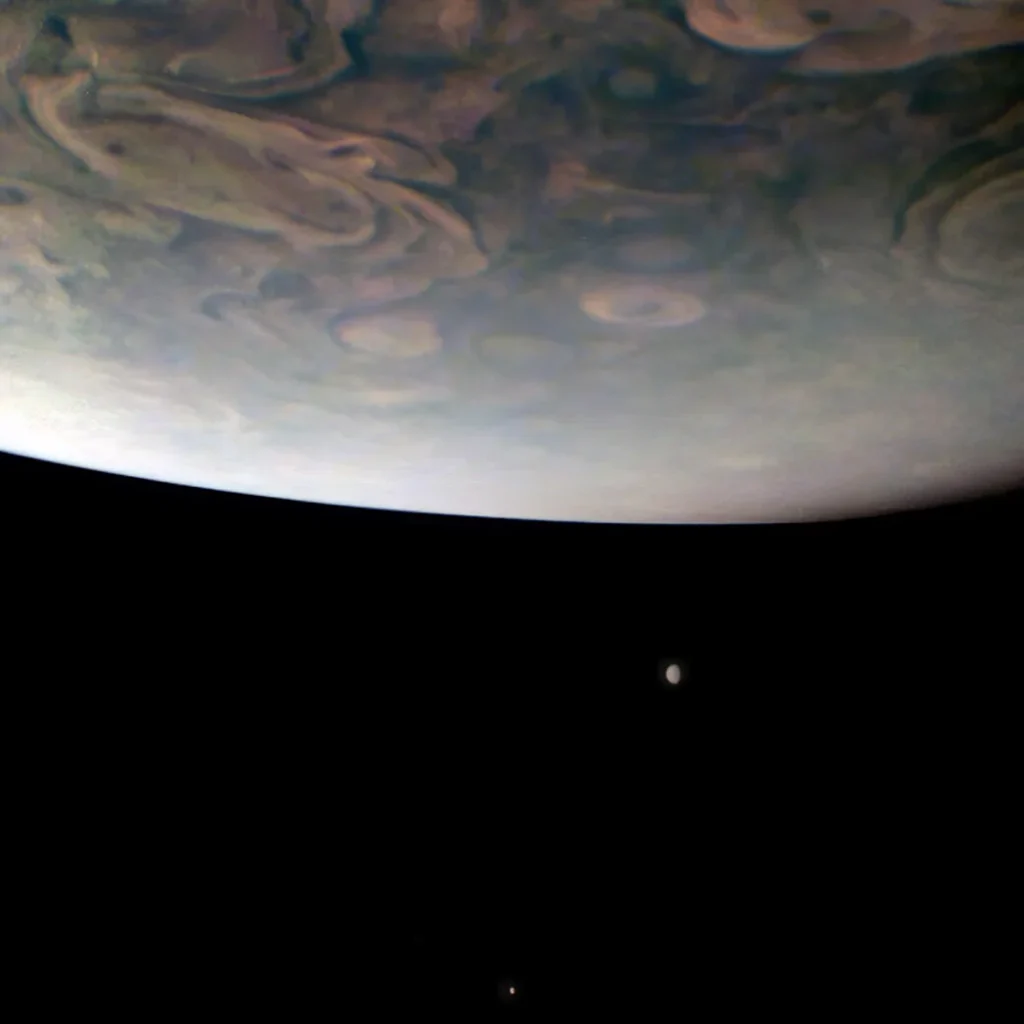NASA’s Juno mission detects two of Jupiter’s moons
- November 30, 2022
- 0
On November 29, 2021, NASA’s Juno mission completed its 38th close pass of Jupiter. As the spacecraft flew low over the cloud tops of the giant planet, the
On November 29, 2021, NASA’s Juno mission completed its 38th close pass of Jupiter. As the spacecraft flew low over the cloud tops of the giant planet, the

On November 29, 2021, NASA’s Juno mission completed its 38th close pass of Jupiter. As the spacecraft flew low over the cloud tops of the giant planet, the JunoCam instrument captured this image of Jupiter’s two largest moons.
In the foreground, hurricane-like spiral wind patterns called vortices can be seen swirling in eddies in the planet’s north polar region. These powerful storms can reach heights of over 30 miles (50 kilometers) and widths of hundreds of miles.

Juno will fly close to Io in December 2023 and February 2024, making this the first such close encounter with this intriguing satellite in over two decades. Io is the most volcanic body in our solar system, and its eruptions leave behind a cloud of material that fills Jupiter’s magnetosphere and forms a torus of gas and dust around Jupiter. During close flybys, Juno will study Io’s volcanoes and geology, looking for traces of an ocean of magma, and investigating how Io interacts with Jupiter’s giant magnetosphere.
Citizen scientist Gerald Eichstedt used the raw JunoCam data to create the original version of this image, and then another citizen scientist, Thomas Thomopoulos, further processed the image by zooming in and improving the color.
In this view, north is below. At the time the photo was taken, Juno was at a latitude of about 69 degrees, about 8,700 miles (14,000 kilometers) above Jupiter’s cloud tops, and was moving at about 123,000 miles (198,000 kilometers per hour) relative to the planet.
Source: Port Altele
John Wilkes is a seasoned journalist and author at Div Bracket. He specializes in covering trending news across a wide range of topics, from politics to entertainment and everything in between.